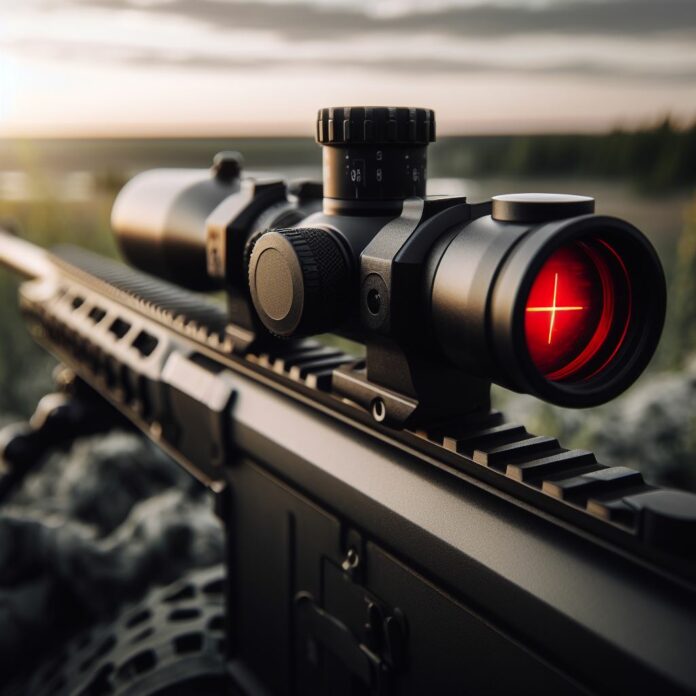A red dot scope is a popular sighting device used by shooters for improved target acquisition, enhanced accuracy, and increased speed. It offers a simple, yet effective, way to aim at a target by projecting a red dot onto the lens.
A red dot scope works by using an LED (Light Emitting Diode) to create a reticle that appears as a red dot. This dot remains in the center of the sight, allowing for precise aiming at the target. There are different types of red dot scopes available in the market, including tube style, open style, holographic, and prism scopes, each offering unique features and benefits.
Using a red dot scope offers several advantages for shooters. It provides improved target acquisition, allowing for quick and accurate aiming. The red dot helps shooters stay on target and make precise shots. A red dot scope offers increased speed, allowing for fast target transitions and rapid follow-up shots. The flexible eye relief of a red dot scope ensures comfortable shooting positions without compromising accuracy.
To use a red dot scope effectively, it is important to understand the specific features and adjustments of the scope. This includes zeroing the sight, adjusting brightness settings, and maintaining proper eye alignment with the sight. Practice and familiarity with using a red dot scope are essential for effective shooting.
To ensure the longevity and optimal performance of a red dot scope, proper maintenance and care are necessary. This includes regular cleaning, protecting the scope from moisture and impact, and checking the battery to ensure it is functioning properly.
What is a Red Dot Scope?
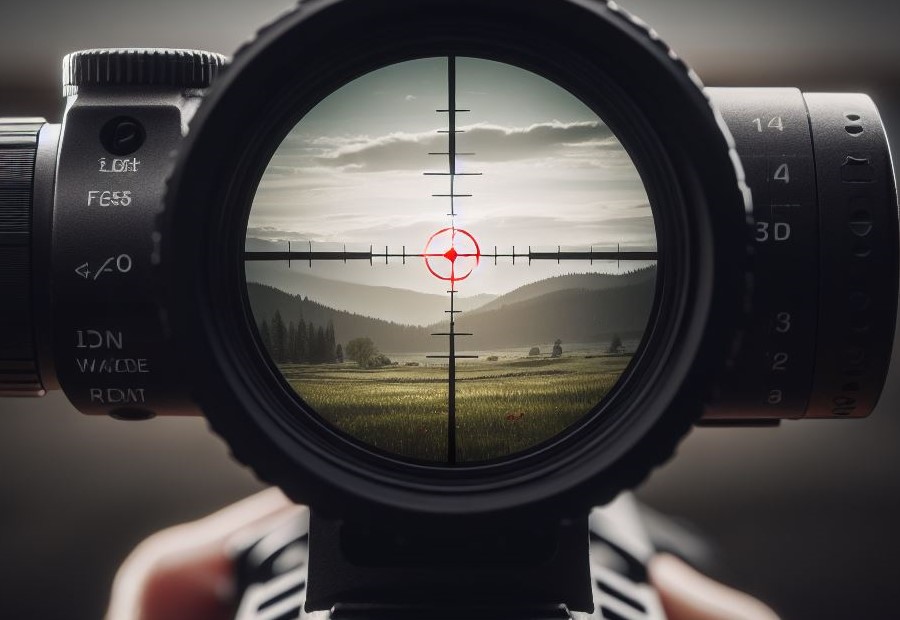
A red dot scope is a type of optical sighting device used primarily in firearms. It provides a clear and illuminated red dot reticle that helps shooters aim accurately. Unlike traditional magnifying scopes, red dot scopes have no magnification and are designed for close-quarters engagements.
The red dot is projected onto a small glass window, allowing shooters to acquire their target quickly and effectively. The key advantage of a red dot scope is its unlimited eye relief, meaning the shooter can maintain proper shooting position without worrying about the distance between their eye and the scope.
Red dot scopes are commonly used in applications such as hunting, competitive shooting, and tactical operations. They are especially popular in fast-paced scenarios where quick target acquisition is essential. When choosing a red dot scope, factors to consider include the size of the dot, battery life, durability, and overall quality.
How Does a Red Dot Scope Work?
A red dot scope, also known as a reflex sight, functions by utilizing a light-emitting diode (LED) to generate a dot image on a transparent lens. This dot is then merged with the target that you are aiming at, facilitating an efficient and precise shot. The LED emits light that bounces off a partially silvered mirror, which subsequently projects the dot onto the lens. This enables the shooter to simultaneously perceive the dot and the target, assisting in target acquisition.
The size of the dot plays a crucial role when utilizing a red dot scope. Smaller dots offer enhanced precision, while larger dots enable quicker target acquisition. Moreover, the brightness settings of the scope can be adjusted to adapt to diverse lighting conditions, ensuring optimal visibility. Furthermore, red dot scopes are typically equipped with long-lasting batteries, allowing for extended usage without frequent replacements.
To ensure accuracy and precise shot placement, it is imperative to align the dot with the target while keeping both in focus when using a red dot scope. Additionally, it is important to practice proper eye relief by determining the distance between your eye and the scope that offers a clear and unobstructed view of both the dot and the target.
When selecting the right red dot scope for your requirements, it is essential to understand how these scopes function. Consider factors such as reticle type, dot size, brightness settings, and battery life to ensure that you find a scope that aligns with your shooting style and preferences.
Types of Red Dot Scopes
- Holographic sight: This type of red dot scope, known as a holographic sight, projects a holographic reticle onto the target using a laser diode and a hologram. It provides a clear and precise aiming point, even in bright light conditions.
- Reflex sight: The reflex sight is the most common type of red dot scope. It utilizes a reflective surface to project a red dot onto the target. It is simple to use and offers a wide field of view.
- Tube sight: A tube sight, which has a design similar to a traditional scope, is another type of red dot scope. It utilizes a lens and LED to create a red dot reticle. This type is known for its durability and offers better water and shock resistance.
Pro-tip: When selecting a red dot scope, it is important to consider the type of firearm you will be using it on and the specific requirements of your shooting activities. Each type of red dot scope has its own advantages and disadvantages, so be sure to choose the one that best suits your needs.
Benefits of Using a Red Dot Scope
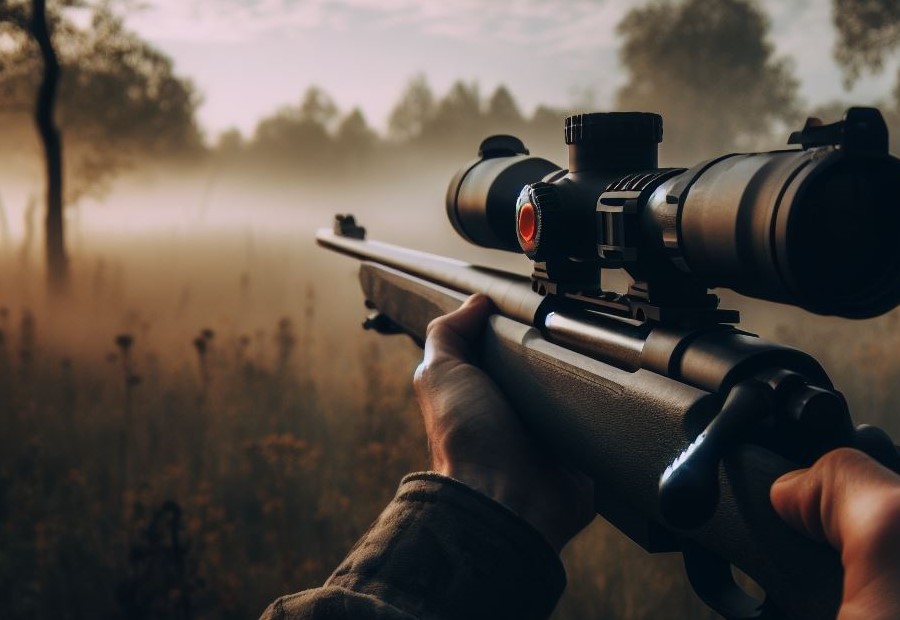
Discover the incredible benefits that come with using a red dot scope! From improved target acquisition to enhanced accuracy and increased speed, this powerful device revolutionizes your shooting experience. Not only that, but its flexible eye relief ensures maximum comfort without compromising performance. With a red dot scope by your side, you’ll hit your targets with precision and speed like never before. Get ready to take your shooting skills to the next level!
Improved Target Acquisition
One of the key benefits of using a red dot scope is the improved target acquisition it offers. A red dot scope helps shooters quickly and accurately acquire their target, resulting in an enhanced overall shooting experience.
- With a red dot scope, aiming at your target becomes much faster and more efficient, leading to quick target acquisition. The illuminated red dot serves as a visual reference point, enabling you to quickly align your firearm with the target.
- The red dot sight provides a clear and precise aiming point, resulting in enhanced accuracy when shooting. The dot is often parallax-free, ensuring that the point of aim remains consistent regardless of the shooter’s position or eye movement.
- Unlike traditional iron sights that require aligning multiple elements, a red dot scope simplifies the sight picture, reducing sight picture complexity. Shooters only need to focus on placing the red dot on the target, minimizing the complexity and potential for error.
- Red dot scopes often have adjustable brightness settings, allowing for optimal visibility in various lighting conditions and improved low light performance. This feature is particularly beneficial when shooting in low light or transitioning between bright and dark environments.
- By using a red dot scope with both eyes open, shooters maintain a wider field of view and better situational awareness, leading to increased situational awareness. This allows for quicker target acquisition and tracking of multiple targets.
Enhanced Accuracy
When choosing a red dot scope, enhanced accuracy is a crucial factor to consider. Here are four steps to achieve enhanced accuracy:
- Select a high-quality red dot scope: Look for a reliable and well-reviewed brand that offers precision and durability. A quality red dot scope will ensure accurate target acquisition.
- Choose the right reticle: Consider the type and design of the reticle that best suits your shooting needs. Different reticle patterns can enhance accuracy by providing a clear and precise aiming point.
- Adjust the brightness settings: Ensure that the red dot’s brightness level matches the lighting conditions in your shooting environment. Properly adjusting the brightness will help you maintain a crisp and visible reticle, resulting in improved accuracy.
- Practice and zero-in: Regularly practice using your red dot scope and zero it in for optimal accuracy. Zeroing-in involves aligning the reticle with the point of impact to ensure that your shots consistently hit the intended target.
With these steps, you can greatly enhance your accuracy when using a red dot scope, ultimately improving your shooting performance.
Increased Speed
- Quick target acquisition: A red dot scope allows for increased speed in quick target acquisition due to its illuminated reticle. With a red dot sight, you can quickly line up the dot with your target, resulting in faster shot placement.
- Rapid follow-up shots: The unlimited eye relief provided by a red dot scope allows you to maintain awareness of the target while taking quick follow-up shots. Thisincreased speed is especially beneficial in dynamic shooting situations or when engaging multiple targets.
- Increased speed: The simplicity of a red dot sight’s design and the absence of magnification makes it easier and faster to acquire and engage targets. Whether you’re shooting in competitions or for self-defense purposes, the increased speed offered by a red dot scope can give you a significant advantage.
Fact: Studies have shown that shooters using red dot scopes can engage targets up to 33% faster compared to traditional iron sights, resulting in quicker and more accurate shooting.
Flexible Eye Relief
| Flexible Eye Relief | |
| Definition: | Flexible eye relief refers to the distance between your eye and the rear lens of a red dot scope where you can still see the complete reticle. |
| Importance: | Having flexible eye relief is crucial for comfortable and accurate shooting. It allows you to position your eye at a comfortable distance from the scope, regardless of whether you are shooting with both eyes open or in awkward shooting positions. |
| Benefits: |
|
| Considerations: |
|
Pro Tip: When choosing a red dot scope, prioritize finding a balance between comfortable eye relief and the other important features that suit your shooting needs. Test different scopes to see which offers the best combination of flexible eye relief, reticle clarity, and durability for optimal performance.
Factors to Consider When Choosing a Red Dot Scope
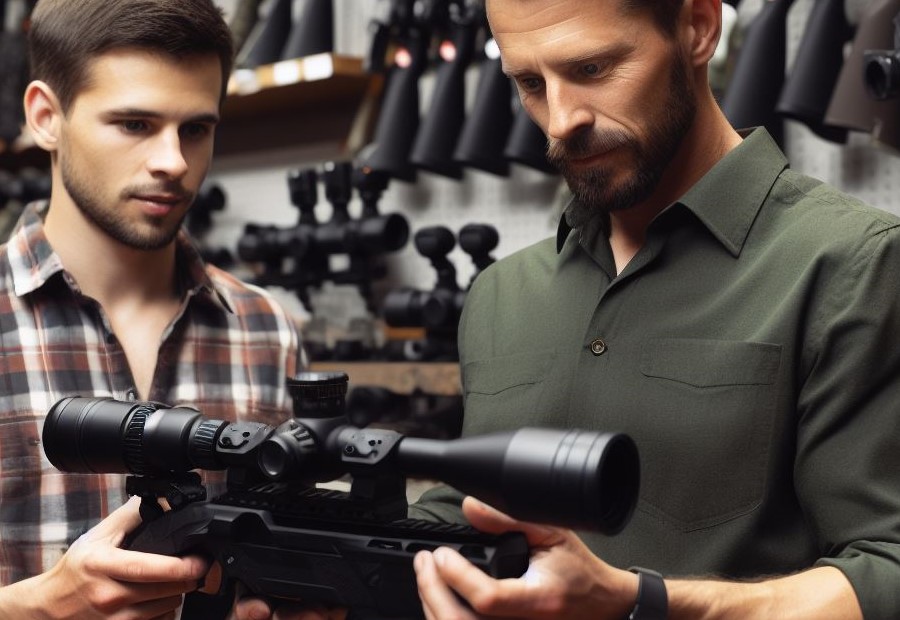
When it comes to choosing a red dot scope, there are several factors you need to consider.
In this section, we’ll explore these key factors that can make all the difference in your shooting experience.
From understanding the various reticle types to finding the perfect dot size and brightness settings, we’ll uncover the essential elements that can help maximize your accuracy and target acquisition.
Additionally, we’ll dive into the importance of battery life in ensuring your red dot scope performs reliably in the field.
Reticle Type
A red dot scope is a popular type of optic used for firearms and other weapons. It utilizes a reticle, also known as the aiming point, to help shooters aim accurately at their target. There are different types of reticles available for red dot scopes, each with its own characteristics and advantages. The table below provides information on the different reticle types commonly found in red dot scopes:
| Reticle Type | Description |
|---|---|
| Dot | A simple dot as the aiming point. It offers a precise aiming reference and is commonly used for close-quarters shooting. |
| Circle-Dot | A combination of a dot and a surrounding circle. The circle allows for faster target acquisition, while the dot provides precision for aiming at smaller targets. |
| Crosshair | A reticle that features intersecting lines to form a crosshair pattern. It provides vertical and horizontal reference points for precise aiming at various distances. |
| Triangle | A reticle shaped like a triangle. It offers a more intuitive aiming point and can be useful for quick target acquisition. |
When choosing a red dot scope, consider the reticle type that best suits your shooting needs. The dot reticle is great for simplicity and precise aiming, while the circle-dot or crosshair reticles offer a balance between speed and accuracy. The triangle reticle provides a unique aiming point for fast target acquisition. Make sure to evaluate your shooting style and preferences to determine which reticle type will enhance your shooting proficiency.
Dot Size
The dot size is a crucial consideration when selecting a red dot scope because it directly impacts the size of the illuminated dot projected onto the target. This dot size plays a significant role in determining accuracy and precision when aiming.
To gain a better understanding of the importance of dot size, let’s take a look at a table that showcases different dot sizes and their implications:
| Dot Size | Implications |
| 1 MOA (Minute of Angle) | Delivers a precise aiming point, making it ideal for fine target acquisition and accuracy. |
| 2 MOA | Strikes a balance between precision and speed, making it suitable for various shooting applications. |
| 4 MOA | Provides a larger dot for quick target acquisition, but sacrifices some precision at longer distances. |
| 6 MOA | Offers an even larger dot for rapid target acquisition, but may not be ideal for precise aiming at longer ranges. |
As demonstrated, the specific dot size you choose should align with your shooting needs and personal preferences. Choosing a smaller dot size is ideal for precision shooting, whereas opting for a larger dot size enhances faster target acquisition.
Brightness Settings
The brightness settings on a red dot scope are an essential feature that allows users to adjust the intensity of the illuminated reticle to suit different lighting conditions. These settings typically range from low to high, with some scopes offering multiple levels of brightness. The purpose of these settings is to ensure that the reticle remains visible and clear, regardless of whether you are shooting in bright sunlight or low-light environments.
Having the ability to adjust the brightness settings is crucial for achieving optimal target acquisition and accuracy. In bright conditions, a higher brightness setting can help the reticle stand out against the background, while a lower setting is preferable in low-light situations to prevent the reticle from appearing too bright and obstructing your vision.
When choosing a red dot scope, it’s important to consider the available brightness settings and how well they suit your shooting needs. Look for scopes that offer a wide range of brightness levels and have easily accessible adjustment controls. Additionally, consider whether the scope has an automatic brightness feature that can adjust the intensity based on ambient light conditions.
Pro-tip: When using a red dot scope, start with a lower brightness setting and gradually increase it until the reticle is clearly visible against the target. This will help prevent the reticle from appearing overly bright and causing discomfort or distractions during shooting.
Battery Life
When considering the battery life of a red dot scope, there are several factors to keep in mind:
- Type of battery: Red dot scopes can use different types of batteries, such as CR2032 or CR123, which can affect their battery life. Lithium batteries generally have a longer lifespan compared to alkaline batteries.
- Battery capacity: The capacity of the battery, measured in milliampere-hours (mAh), determines how long it can power the red dot scope. The higher the capacity, the longer the battery life will be.
- Usage frequency: The amount of time the red dot scope is used will impact its battery life. If the scope is used frequently, the battery will drain faster compared to occasional use.
- Reticle brightness: Red dot scopes often have adjustable brightness settings. Higher brightness levels will consume more battery power compared to lower settings.
- Auto-off feature: Some red dot scopes have an auto-off feature that turns off the reticle after a period of inactivity to conserve battery power. This feature can significantly extend the battery life.
How to Use a Red Dot Scope
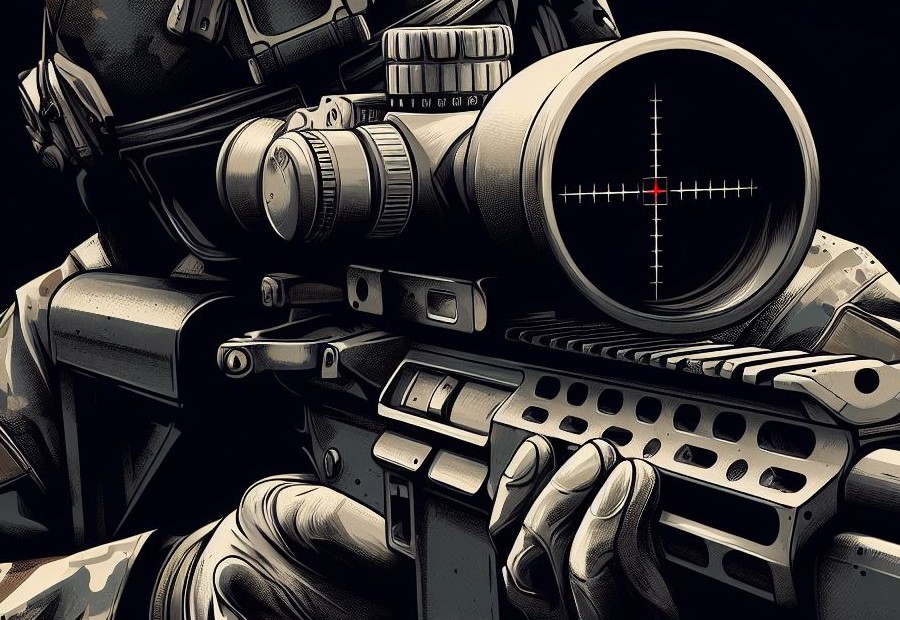
When it comes to using a red dot scope, knowing how to use it properly is essential for accurate and effective aiming. Here are the steps you need to follow:
- Mounting: Securely attach the red dot scope to your firearm’s rail system using the appropriate mounting hardware. This will ensure it stays in place during use.
- Zeroing: Adjust the windage and elevation settings of the red dot sight to align the reticle with the point of impact. Start by aiming at a target and make small adjustments until the bullet hits the desired spot.
- Eye Relief: Position your eye at the correct distance from the scope to achieve a clear and full field of view. This will help you see the target and reticle clearly.
- Target Acquisition: While keeping both eyes open, focus on the target while being aware of the red dot sight. Bring the firearm up to your shoulder and align the red dot with your target.
- Sight Alignment: Ensure that the red dot is centered on the target and also aligns with any iron sights or other aiming devices on your firearm. This will help you aim accurately.
- Trigger Control: When the red dot is aligned with the target, apply steady pressure to the trigger until the shot breaks. Maintain your focus on the target and keep tracking the red dot.
- Follow-Through: After taking the shot, maintain your focus on the target and observe where the bullet lands. If necessary, make any adjustments to your aim or hold.
Tips for Maintaining and Caring for a Red Dot Scope
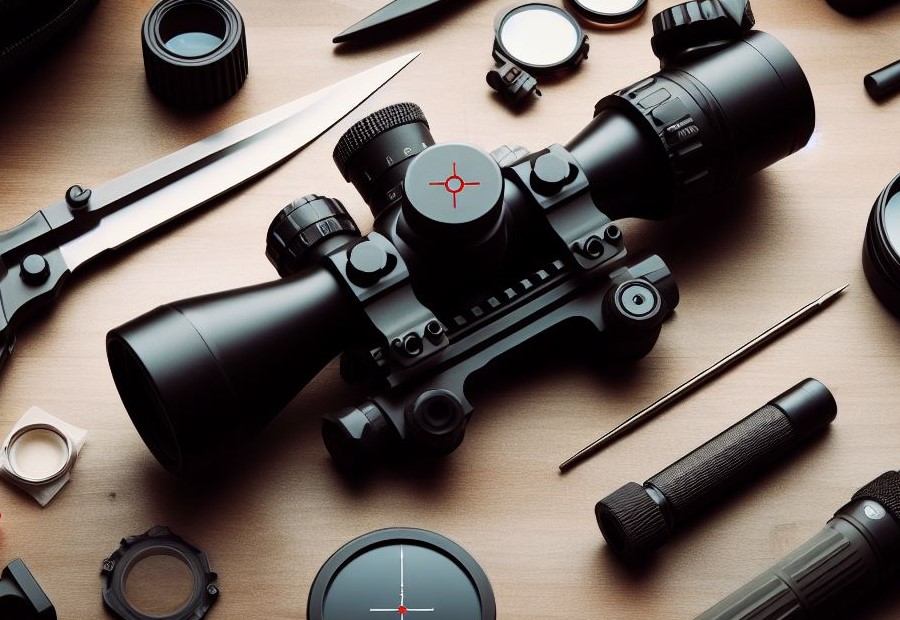
- Regularly clean the lens with a microfiber cloth to remove dust and debris that may affect visibility.
- Check the battery life frequently and replace it before it dies to avoid any hiccups during use.
- Protect the scope from extreme temperatures and moisture to prevent damage.
- Store the scope in a padded and waterproof case when not in use to keep it safe and secure.
- Perform regular zeroing adjustments to ensure accuracy and precision.
- Avoid using excessive force or dropping the scope, as it can lead to internal damage.
- Use lens caps or covers to protect the lens from scratches and other potential damage.
- Inspect the mounting system regularly to ensure it is secure and properly aligned.
Remember that proper maintenance and care will help prolong the lifespan of your red dot scope and ensure consistent performance.
Fact: Red dot scopes are widely used in shooting sports and hunting due to their ability to provide quick target acquisition and improved accuracy.
Frequently Asked Questions
What is a red dot scope?
A red dot scope, also known as a reflex sight or red dot sight, is a non-magnifying reflector sight that provides an illuminated red dot as a point of aim.
How does a red dot scope work?
A red dot scope uses a red LED at the focus of collimating optics to generate a dot-style illuminated reticle. The LED emits red light, which is reflected by a spherical mirror with a special coating, creating the red dot that serves as the reticle.
What is the difference between a red dot sight and a reflex sight?
The terms “red dot sight” and “reflex sight” are often used interchangeably to refer to the same type of optic. Both types use the same basic principle of using a red LED to create an illuminated red dot as the reticle.
Are red dot scopes suitable for night vision use?
Yes, red dot scopes can be used with night vision equipment. Their long eye relief allows for mounting the scope at any distance from the shooter’s eye, accommodating the use of night vision goggles or scopes.
Can a red dot sight be used on pistols?
Yes, miniature red dot sights are becoming popular for use on pistols. Their compact size and lightweight construction make them suitable for concealed carry pistols.
What are the applications of red dot scopes?
Red dot scopes have a wide range of applications, including civilian target shooting, hunting, military and police applications, speed shooting sports, and paintball and airsoft games. They are valued for their fast target acquisition and ease of use.

